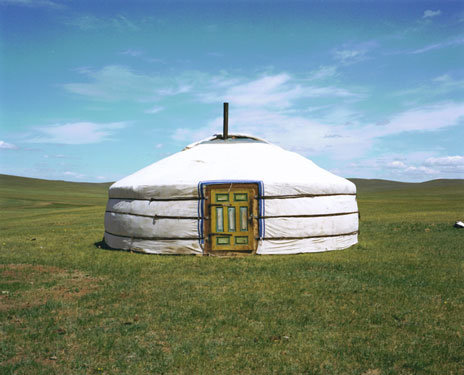Mette Tronvoll
dal 7/11/2007 al 21/12/2007
Segnalato da
7/11/2007
Mette Tronvoll
Francoise Heitsch, Munich
Mongolia. Photography. In her new series, the artist again confronts us with people from the periphery: Mongolian horsemen, fighters, mothers, married couples, children, and youths. Set in their native landscape against a wide, unobstructed horizon, they face the camera directly.

Mongolia
In her new series, Mette Tronvoll again confronts us with people from the periphery: Mongolian horsemen, fighters, mothers, married couples, children, and youths. Set in their native landscape against a wide, unobstructed horizon, they face the camera directly. The steppes and mountains behind them are almost Arcadian, a backdrop for half-forgotten myths that speak of romantic freedom and heroic conquests. Thus preserved in their untouched natural surroundings, the figures become idealized images of remoteness, far from our urban centers and our grasp of time.
Mongolia has always been an independent state, but in the twentieth century it found itself geopolitically hemmed in by two superpowers: the People’s Republic of China and the former USSR. Although alternately influenced by both, the country continually managed to preserve its own identity. Its nomadic citizens still set up their gers as they did in the days of Djenghis Khan, still gird their jackets against the wind and cold as they have since time immemorial.
Stylistically, these are static compositions with nothing of the snapshot about them. They are situational and avoid narrative. Her theme always revolves around the temporal, whether she contrasts individual portraits of older and younger women as in the series Age (1994) or, as in Double Portraits (1998), presents side-by-side two almost identical photos of the same person, taken in quick succession. In her individual and group portraits of bathers on the island of Unartoq, Greenland, of 1999, she subtly evokes the same theme. And here, too, in the series of images from Mongolia, she understands how to dissolve space into the mythological, allowing the figures and the gers to seem like busts carved from stone. The temporal vanishes into the eternal, only to be brought back to itself through those manifest traces of global civilization.
Sassa Trülzsch, Berlin 2004.
Francoise Heitsch
Amalienstrasse 19 - Munich



